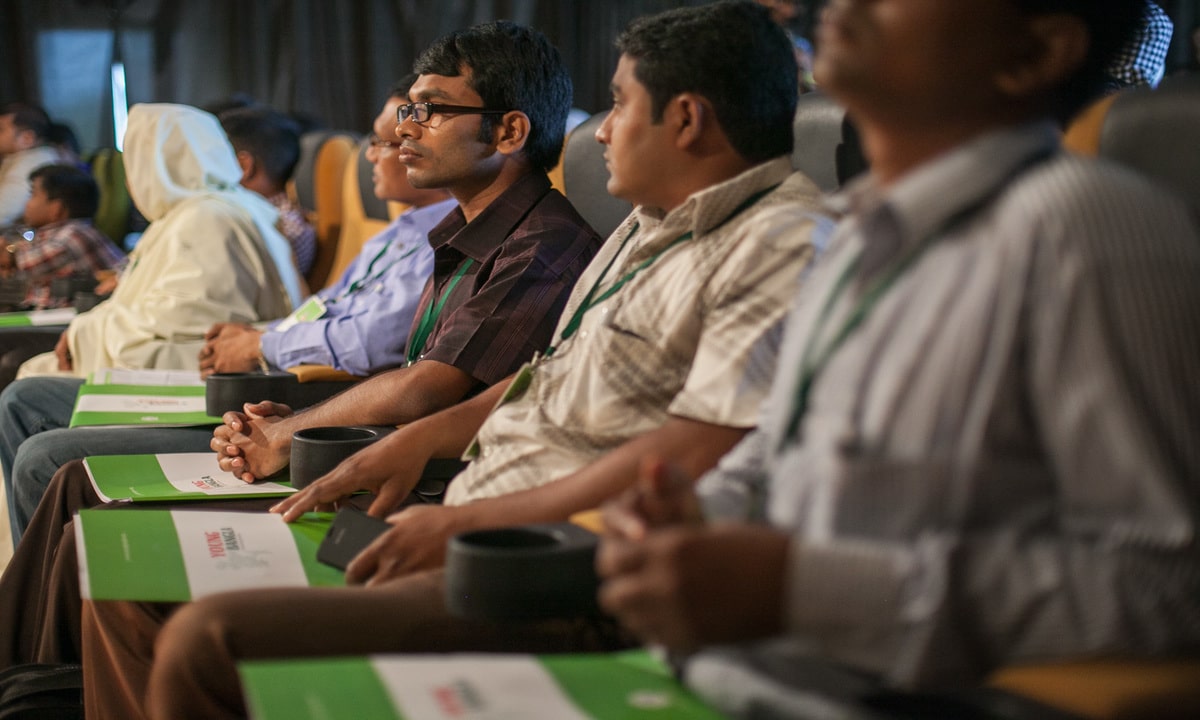GET IN TOUCH
- Please wait...

Bangladesh has sustained a high GDP growth over the past decade that has put to bed the old moniker of “basket case” and helped position the country as one of the world’s fastest-growing economies. Though the predictions from multilateral organizations for FY20-21 are highly varied from one another, The Bangladesh Bureau of Statistics(BBS) reported a 5.24% GDP growth in FY19-20 despite the effect of COVID-19. As Bangladesh speeds its way towards the status of a middle-income country in line with the Government’s Vision 2021, it has faced a setback with the onset and persistence of the global pandemic. COVID-19 has shone a light upon the existing problems persisting in the development of labor and the consequent decline in the employability of their skills.
The case is arguably most pronounced through the burgeoning rate of youth unemployment. According to the joint study conducted by the International Labour Organisation (ILO) and the Asian Development Bank (ADB), the country’s youth unemployment rate could rise two-fold to 24.8 percent in 2020. The rate was 11.9 percent in 2019.[1] This was the initial prediction based on the assumption that the coronavirus threat could not be properly contained within a year. Given the still-high rates of infection at the time of writing and the threat of a possible second wave during the winter months of 2020, fears are yet to be assuaged.
Hemingway coined the term “The Lost Generation” for the post WWI youth stricken with anxiety and a lack of purpose. The Youth in the wake of the Pandemic have parallel symptoms and may be called “The Lockdown Generation”.
Fresh graduates and youth in both urban and rural settings have seen a lack of openings in the job market– a long-persisting problem in Bangladesh. This issue is explained by a number of factors.

Throughout its impressive development, Bangladesh has not yet been able to shake off the global opinion that domestic labor is cheap. Inflation targets have been continually met by the government’s prudent fiscal spending and monetary policy, and living standards have ameliorated significantly. However, labor productivity and real wages have not risen at such rates. Low productivity, low unionization, combined with an abundant supply of labor willing to work at any given time have kept real wage growth at bay.
| Sl. | Country | Per Worker Productivity (‘000 of USD as of 2016) |
| 1. | Bangladesh | 8.6 |
| 2. | Cambodia | 6.2 |
| 3. | China | 24 |
| 4. | Hong Kong | 110.5 |
| 5. | India | 16 |
| 6. | Indonesia | 24.9 |
| 7. | Myanmar | 10.6 |
| 8. | Pakistan | 16.4 |
| 9. | Sri Lanka | 30.7 |
| 10. | Vietnam | 10.2 |
One of the best ways to tackle this low labor productivity and bridge the dispersion between in-demand skills in the job market and skills attained through formal education, is the prevalence of Technical and Vocational Education and Training (TVET).
The main incentive for building and implementing TVET programs is how they will compound and develop the employability of labor by equipping them with the necessary skills for the job market. This will also reduce costs of training by businesses and allow for greater labor productivity. Governments in African countries such as Rwanda, Ghana, and Uganda have already developed nationalised bodies to facilitate TVET as a means of curbing their youth unemployment. In Malaysia, up to seven ministries provide certification upon completion of TVET programs. Sri Lanka is currently planning to implement TVET as a mandatory subject in their school curriculums. In the wake of another industrial revolution, vocational training will go a long way in helping youth adopt new technology and skills in future workplaces.
1. Formal TVET:
Secondary level of formal TVET courses can be availed upon completion of 8 years of schooling. Subsequently, a certificate of diploma can be availed upon completion of secondary and higher secondary level of TVET.
2. Short duration skill training:
Which includes training courses and programs for building specific skill-sets and generally do not span a period greater than one year. Programs are typically formally recognized and offer certification upon completion.
3. Non-formal or informal training:
Non-formal refers to training which is imparted through organizations not officially recognized by a governing body and hence not providing a recognized certification. Informal training includes coincidental or passive learning from friends, family etc.


Currently, the government of Bangladesh is aiming for a 100% parity in terms of education attainment. In the case of TVET, there is a considerable shortfall in reaching this target. Bangladesh Bureau of Educational Information and Statistics (BANBEIS) estimates that gender parity in TVET is only at 23% as of 2018. There is a clear lack of women participation in Vocational training programs and this is reflected by the higher proportion of unemployed graduates, represented by female graduates [3].

The Education Watch Report, 2016 [4] observed from CAMPE’s(Campaign for Popular Education) survey from the same year, observed a growing a trend in proportion of people opting for Short Duration Skill Training over time and also showed a positive correlation between the availing of said training with food security status, measured across socioeconomic demographic segments. This brings to focus the importance of improving the effectiveness of Social Security Net Programmes in Bangladesh.
It is imperative that a culture of life-long learning is instilled across all educational and vocational training institutions across the nation to ensure that the growth we are experiencing in terms of GDP does not peter out as we look ahead to the future.
Sartaz Zahir, Content Writer and Sanjir Ali, Senior Business Consultant and Project Manager at LightCastle Partners, have prepared the write-up. For further clarifications, contact here: [email protected]
Our experts can help you solve your unique challenges
Stay up-to-date with our Thought Leadership and Insights